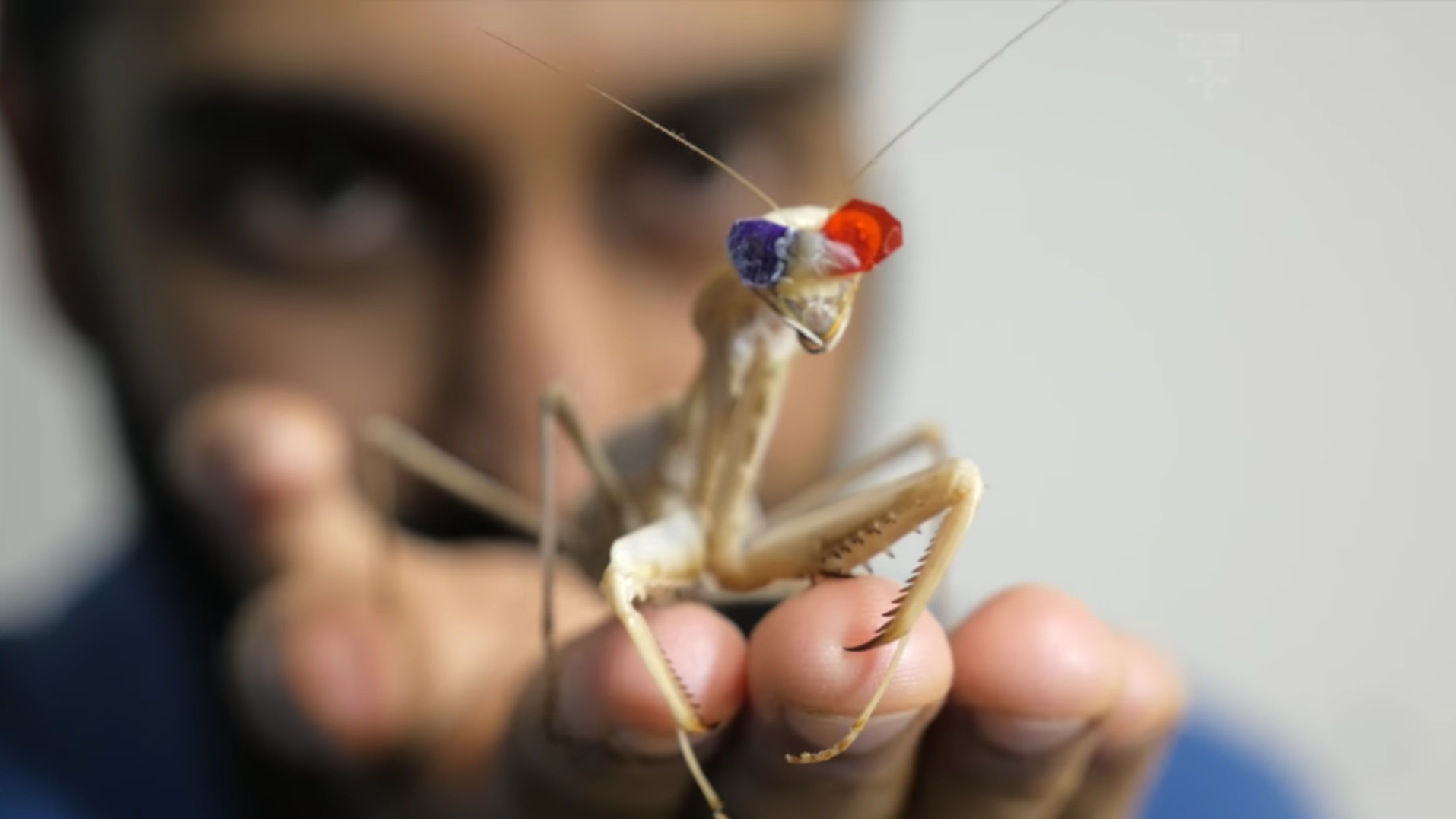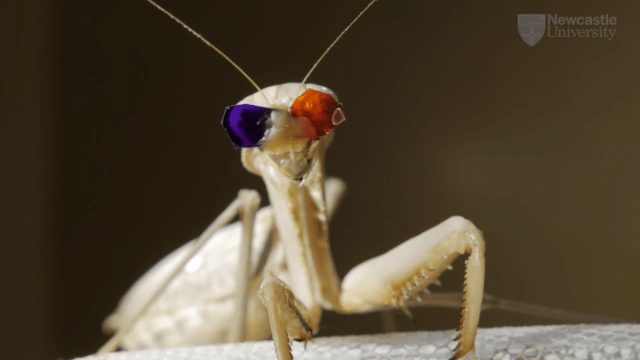Praying mantises see the world in three dimensions in a way that’s completely different from how vertebrates (including birds, humans and other mammals) do, according to a new paper in Current Biology. Also, studying this required putting tiny glasses on mantises.
Screenshot: Newcastle University
Birds and mammals can see in 3D using the differences between the images observed by each eye. But, the researchers at Newcastle University found, praying mantises have evolved a system that’s based on how each image changes. More importantly, as I said before, this involved attaching teeny goggles onto teeny mantis faces with beeswax.

The researchers put the mantises in front of a monitor that showed random dark and bright dots in two colours. The coloured goggles meant that one eye could see one set of coloured dots, and the other eye could see the other set of coloured dots, but neither eye could see both. A patch of dots spiraled into the centre of the frame. In any given frame, the patch of dots was indistinguishable. You can see that around 1:18 in this video from the researchers:
This was meant to simulate prey in front of the target, like one of those 3D images you have to cross your eyes to see. When the moving dots arrived to a spot where they appeared at a strike-able distance, the mantis struck. The researchers set up a number of trials comparing how the mantises reacted to different dots moving in different ways. The dots didn’t need to match up to one another, lead author Vivek Nityananda told The Washington Post. They just needed to be moving.
It isn’t the first time we’ve written about the silly mantis glasses. But the most important difference was, well, last time we learned the bugs could see in 3D. Now we know how.
This is still a lab trial and no one knows what the praying mantis is really seeing. But it appeared to the researchers that “mantis [depth perception] is computationally simple enough to implement in a brain of one million neurons and – remarkably – successfully detects stereoscopic distance in images where human [depth perception] fails”.
Once again, those glasses. Dang.
